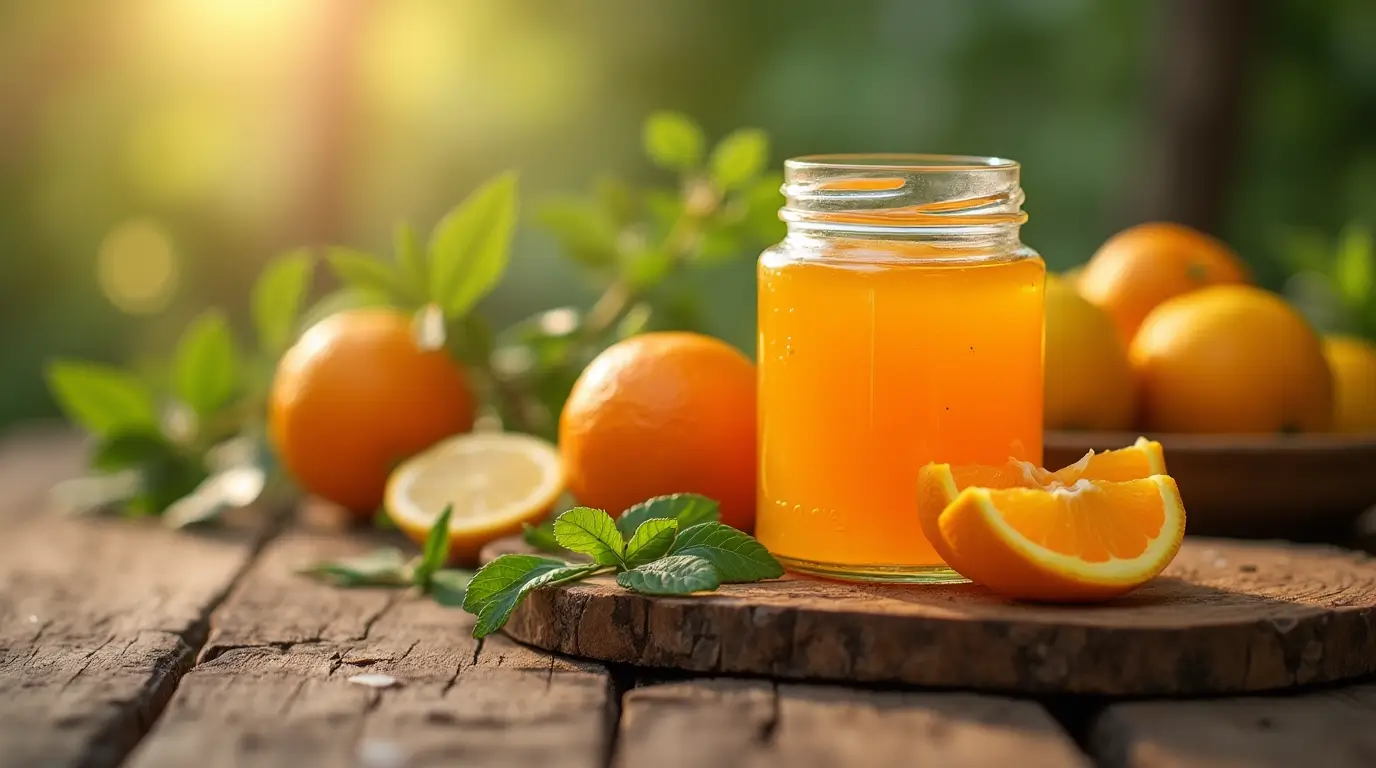Marmalade—just the word might conjure up images of golden spreads on toast, paired with steaming cups of tea. Yet, a curious question often arises: is marmalade spicy? While its vibrant tanginess hints at bold flavors, the notion of spiciness might seem puzzling. In this article, we’ll delve deep into what makes marmalade unique, its historical and cultural roots, and why it’s cherished for its distinct balance of sweetness, bitterness, and tang. Along the way, we’ll answer questions about whether marmalade can be spicy and explore its culinary versatility. Ready to unwrap the mysteries of this beloved citrus preserve? Let’s dive in!
Table of contents
What is Marmalade?
Is Marmalade Spicy? A Historical Perspective
Marmalade has a fascinating past steeped in history and tradition. Its origins trace back to 16th-century Europe, where the Portuguese made a thick quince paste called marmelada. Over time, this recipe evolved into the citrus-based spread we know today. Scotland played a pivotal role in popularizing marmalade, with Dundee becoming a hub for commercial production. Today, marmalade remains a breakfast staple across the globe, celebrated for its zesty charm.
How Marmalade is Made: Sweet, Tangy, and Bold
At its heart, marmalade is a simple yet artful combination of citrus fruits—usually oranges—sugar, and water. The magic lies in the use of the fruit’s peel, which lends marmalade its signature bittersweet edge. The preparation involves boiling the fruit with sugar until it thickens into a glossy, amber-hued spread. Traditional recipes often use Seville oranges for their intense, slightly bitter flavor.
Types of Marmalade: Sweet, Tangy, and Never Spicy
Marmalade isn’t a one-flavor-fits-all kind of spread. Variations abound, from the classic Seville orange marmalade to gentler versions made with sweet oranges, lemons, or even grapefruits. Some adventurous cooks even infuse their marmalade with unexpected twists like ginger or chili flakes, adding a subtle kick to the sweetness. But, despite these creative takes, spiciness remains a rarity in the marmalade world.

Understanding Spicy Flavors
Is Marmalade Spicy or Just Tangy?
When it comes to spicy foods, capsaicin is the main ingredient. This compound, found in chili peppers, triggers receptors in your mouth that tell your brain you’re feeling heat. Surprisingly, this reaction isn’t real heat but a trick your body plays. Unlike marmalade’s tangy flavor from citrus fruits, spiciness is a unique sensation caused by capsaicin’s fiery kick.
The Science Behind Spiciness: Why Marmalade Isn’t Spicy
People often confuse tangy flavors with spiciness because both pack a bold punch. Tangy foods, like marmalade, have a sharp, zesty flavor that wakes up your taste buds. This brightness comes from acidic components, such as citrus or vinegar, rather than heat-producing agents like chili. So, if you’re wondering, is marmalade spicy? The short answer is no—its lively flavor profile is tangy, not fiery.
Tangy vs. Spicy: What Sets Marmalade Apart
It’s easy to see why some might think marmalade could be spicy, especially with modern recipes adding twists like ginger or chili. However, traditional marmalade has no spicy elements. This confusion often stems from cultural differences in how people perceive strong flavors. While tangy or bitter foods might feel “bold,” they don’t qualify as spicy. Simply put, marmalade may be bold, but it’s not blazing!
Is Marmalade Spicy? Debunking the Myth
Why Marmalade is Not Spicy
So, is marmalade spicy in any way? No, not at all. Marmalade derives its signature flavor from the peel of citrus fruits, not from spices like chili or pepper. The bitterness of the peel combined with the sweetness of sugar creates a robust flavor that’s complex but entirely free of heat. While some variations might incorporate mild heat for novelty, the core recipe remains strictly tangy.
Flavor Profile of Marmalade: Sweet, Bitter, and Tangy
Marmalade’s appeal lies in its balance of sweetness, bitterness, and tanginess. The sugar provides a comforting sweetness, the citrus peel introduces a bitter undertone, and the fruit juice adds a bright tang. This trifecta makes marmalade a dynamic addition to any dish, but none of these elements bring heat to the table. It’s a vibrant, versatile spread—but never a spicy one.
Regional Variations and Their Influence on Flavor
While marmalade’s essence stays consistent, regional adaptations bring exciting twists. In Britain, the classic Seville orange marmalade leans toward a bittersweet profile. Meanwhile, in Japan, yuzu-based marmalades offer a gentler, floral flavor. In rare cases, adventurous cooks might experiment with spicy ingredients like chili or ginger, but these versions are exceptions, not the rule.

The Role of Marmalade in Cooking and Baking
Popular Recipes Using Marmalade
Marmalade isn’t just for spreading on toast; it’s a flexible ingredient that works well in many recipes. Its bold, tangy flavor adds a special touch to dishes, from glazes for roasted meats to fillings in baked goods. For example, marmalade-glazed chicken blends sweetness and tang for a dish that’s rich and refreshing. If you love sweets, marmalade cakes and tarts are must-tries, bursting with zesty citrus flavor.
Looking for more inspiration? Check out this Ultimate Guide to Banana Chocolate Cake for another deliciously creative recipe idea!
Marmalade in Savory Dishes: Balancing Sweet and Tangy
Using marmalade in savory dishes might seem unconventional, but it’s a game-changer. The tanginess of marmalade cuts through rich, fatty flavors, making it an excellent choice for glazes or marinades. Pork tenderloin glazed with orange marmalade, for instance, brings together savory and sweet in perfect harmony. Similarly, marmalade pairs beautifully with duck or turkey, elevating the natural flavors of the meat.
Using Marmalade as a Flavor Enhancer in Desserts
In desserts, marmalade plays a starring role by adding both flavor and texture. It can be used to fill cookies, top cheesecakes, or swirl through pound cakes. The contrast between the sweet base and the bitter-tangy marmalade creates a dynamic taste experience that leaves you wanting more. No matter how it’s used, marmalade transforms simple desserts into something extraordinary.
Related FAQs
Can Marmalade Be Made Spicy?
Here’s an intriguing twist—can marmalade be spicy? Traditional recipes avoid adding heat, but some modern variations experiment with spices like ginger, chili flakes, or cayenne. These additions create a marmalade that tingles your taste buds without losing its classic citrus charm. However, spiced marmalades remain a niche and don’t represent the traditional recipe.
What Are Some Variations of Marmalade?
Marmalade doesn’t limit itself to oranges. Many recipes explore other citrus fruits like lemons, grapefruits, and exotic options like yuzu. Creative cooks often mix in ingredients like vanilla, cinnamon, or herbs for a distinct twist. Each variation offers a unique flavor profile, but none answer is marmalade spicy with a definitive “yes.”
Is Marmalade Similar to Jam or Jelly?
Many people group marmalade with jams and jellies, but it stands apart. While jam uses crushed fruit and jelly relies on strained juice, marmalade includes the fruit’s peel. This feature gives it a chunky texture and bittersweet flavor that appeals to those who enjoy bold, layered tastes. Marmalade’s zesty complexity makes it truly one of a kind.
FAQs Inspired by People Also Ask
What is marmalade supposed to taste like?
Marmalade has a distinct flavor that combines sweetness, bitterness, and tanginess. The sweetness comes from the sugar used in the recipe, while the bitterness is derived from the peel of the citrus fruit. Tanginess adds a sharp, zesty edge, making marmalade a vibrant and bold spread that wakes up your taste buds.
Is marmalade spicy or not?
No, marmalade is not spicy. Its flavor profile is centered on a balance of sweet, tangy, and bitter notes, without any heat or spiciness. While some creative variations of marmalade might include spices like chili or ginger, traditional marmalade recipes do not feature spicy ingredients.
What flavor is marmalade?
Marmalade has a mix of sweet, tangy, and bitter flavors. It’s usually made from citrus fruits like oranges or lemons, which add a sharp tang and a hint of bitterness. Sugar evens out these strong flavors, creating a spread that’s both tasty and refreshing.
Is marmalade sweet or savory?
Marmalade is mostly sweet but has a special bitter and tangy flavor. People usually enjoy it as a sweet spread, but it works well in savory dishes too, like glazes for meats or marinades. This versatility makes marmalade a great choice for both sweet and savory recipes.

Conclusion
Marmalade boasts vibrant flavors and a rich history, making it a beloved spread that continues to shine through generations. It began with bittersweet roots in Europe and evolved into modern variations that now grace kitchens worldwide. While its tangy profile might surprise some who are unfamiliar with its taste, the question is marmalade spicy has a simple answer: no. Traditional marmalade balances sweet, bitter, and tangy notes without adding heat.
You can enjoy marmalade on toast, use it as a glaze for meats, or experiment with it in new recipes. Its versatility remains one of its strongest appeals. For those seeking a fiery kick, spiced versions do exist, but they represent a niche adaptation. Marmalade’s true charm lies in its simplicity and its ability to elevate any dish with bold, citrusy flavors.

